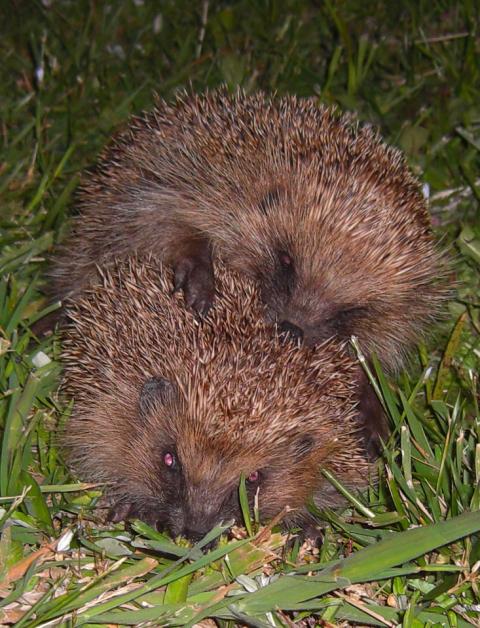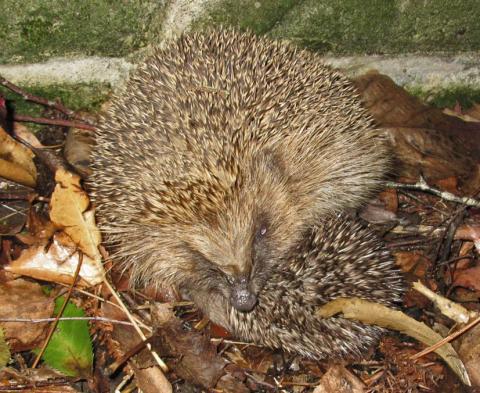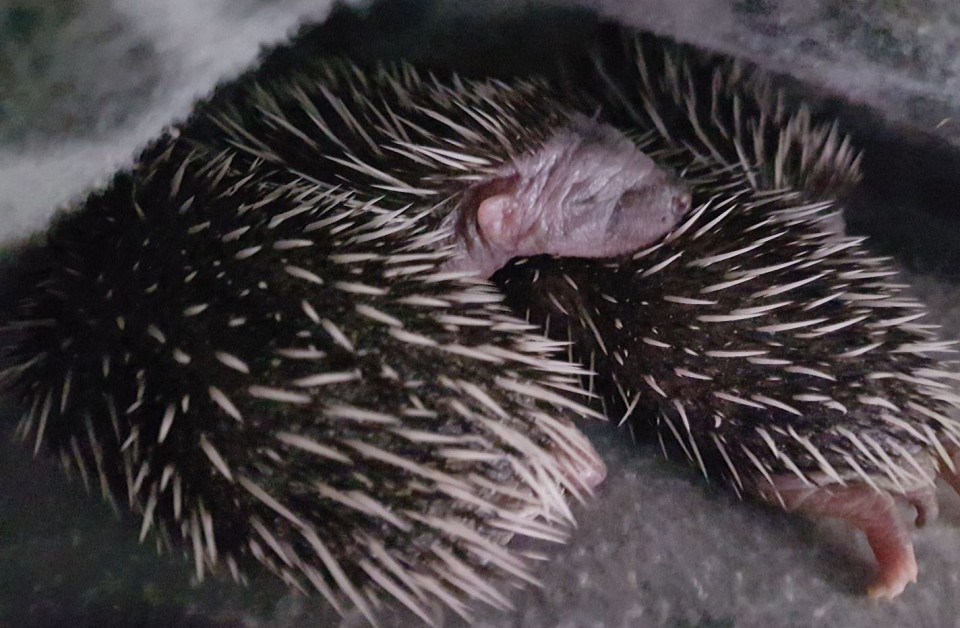European Hedgehog Breeding Biology - Oestrous & Gestation

Throughout most of Europe, the testes that have been involuted during hibernation begin reactivating about midway through hibernation. Full spermatogenesis (sperm production) can be present from March or April and continue into August, declining to a minimum by late September. In the UK, the main breeding season, sometimes called the rut, runs from about mid-April until September, although under mild conditions it may begin as early as March and continue into autumn. Indeed, during the exceptionally mild winter of 2021/22, we observed courtship during November in our south coast garden. It should be noted that females often emerge from hibernation later than males, accounting for the rut starting a few weeks after many people start reporting hedgehogs being active. Indeed, during these weeks in early spring, we often see what appears to be sexual release behaviour among some of the boars. Some populations, in France for example, exhibit clear spring and summer phases to the rut, while it appears to be a more continual process in Britain. In New Zealand, the breeding season is reversed compared with here, hogs breeding between November and March/April.
During his Ph.D. studies, Nigel Reeve observed courtship among hedgehogs inhabiting his London golf course study area to peak during August. This tallies with Pat Morris' findings of a peak pregnancy rate in September (52% females studied in England and Wales were pregnant during this time, compared to an average of 44% between May and July) and data from Amy Haigh and colleagues, who observed peaks in courtship during May and August in south-west Ireland during 2008 and 2010. In his Complete Hedgehog, Les Stocker notes that although births may continue into early October, most litters are born by late July. Similarly, Pat Morris considered most young are probably born in June and July in his New Hedgehog Book, implying many of those September pregnancies do not reach full-term. At the time of writing, the latest (possibly earliest) birth of which I am aware was in January. Withington Hedgehog Care Trust in Manchester received a 14g (0.5 oz.) male hoglet on 7th January 2022, estimated at around four days old, and one of two hoglets found together. Unfortunately, this hoglet died despite emergency care and the second hoglet was apparently dead when the pair were found.
Conception Point
In The Hedgehog, Pat Morris notes that most females will fail to breed in their year of birth, but many will breed into their sixth year. There may also be a weight contingent affecting likelihood of pregnancy. Bryn Morris reported that, among his captive animals at Nottingham University, it was rare for females weighing less than 600g (1.3 lbs) to fall pregnant, with the majority of females becoming pregnant at weights exceeding 700g (1.5 lbs). This may be an artefact of captivity, however, and Morris noted that the seven females in his collection that were pregnant at weights between 550g and 600g were animals brought in pregnant from the wild.
The conception rate in hedgehogs is apparently low and, in Hedgehogs, Nigel Reeve describes them as "rather inefficient at getting pregnant". Indeed, Ruth Deanesly, during her comprehensive assessment of the female hedgehog reproductive system, failed to find any animals that had become pregnant from their first mating. Furthermore, in her paper, published in the Philosophical Transactions of the Royal Society of London in 1934, Deanesly wrote:
"The numbers of large corpora lutea in hedgehogs in May and June, whose uteri show no trace of recent pregnancy, make it clear that a succession of two or three pseudo-pregnancy cycles is by no means uncommon before implantation takes place."

This suggests that the female's reproductive system may require time to 'fire back up' following hibernation; no successful implantations during first oestrus, followed by two or three pseudo-pregnancies may give the uterus time to mature and lay down lining in preparation for pregnancy. Once conception has occurred, it seems that pre-natal mortality (i.e. embryos resorbed in the uterus) is low, at around 3%. Gestation takes around 35 days, although brief periods of torpor triggered by cold weather may extend this and there are records of gestations lasting more than 40 days.
Nigel Reeve notes that hedgehogs are polyoestrous. In other words, they experience a succession of oestrous cycles and can, under favourable conditions, produce two litters in a year. Indeed, several authors have suggested that females found pregnant in September or October are probably on their second litter. Working on the Uists in the Outer Hebrides, for example, Digger Jackson found that 80% of females in his sample produced a second litter and all nine adult females that failed early in the breeding season made a second attempt. Hedgehogs are certainly capable of multiple litters, and the very mild antipodean climate of New Zealand has allowed some hedgehogs there to produce three litters in a year.
Late litters appear relatively common in Britain and although they're often assumed to be second broods, it's difficult to be certain and researchers have tended to assume that second litters are rare. Similarly, death of her young early in the year may bring a female back into oestrous, and observations on captive animals suggest lactating females whose litters have been removed during the first week of suckling can be highly fertile and become pregnant shortly afterwards. This is almost certainly dependent on condition, with well-fed captive animals more likely to have resources to spare for second litters, but it does imply that late litters are not necessarily always second litters.
Ickle prickles: Litter size
Following successful gestation, litter sizes range from two to eleven young, called hoglets (sometimes also "piglets"). The average (mean) litter size in the UK appears to be four, with the remarkable report of 15 hoglets in 1997 more likely the combination of at least two females' litters. Hedgehogs have five pairs of nipples, suggesting they would struggle to raise litters of more than 10 hoglets. In The Natural Hedgehog, founder of the Welsh Wildlife Hospital in Llanddeiniol, Jane Durrant, wrote that she has observed larger average litter sizes in her local town hedgehogs when compared to their rural counterparts, which is presumably a reflection of a better quality habitat (higher density of food, water and suitable shelter).

The litter size can also vary on a wide geographic scale. A study of 85 hedgehog litters from across Sweden by Hans Kristiansson, for example, found the average (mean) litter size to be about five hoglets, with litters of three to six accounting for 72% of the reports. He also noted that the breeding season in Scania, southern Sweden, is only about two months, compared to four months in Britain, which should favour a phenotype of females that can produce a single large litter and may explain the larger litter sizes observed here.